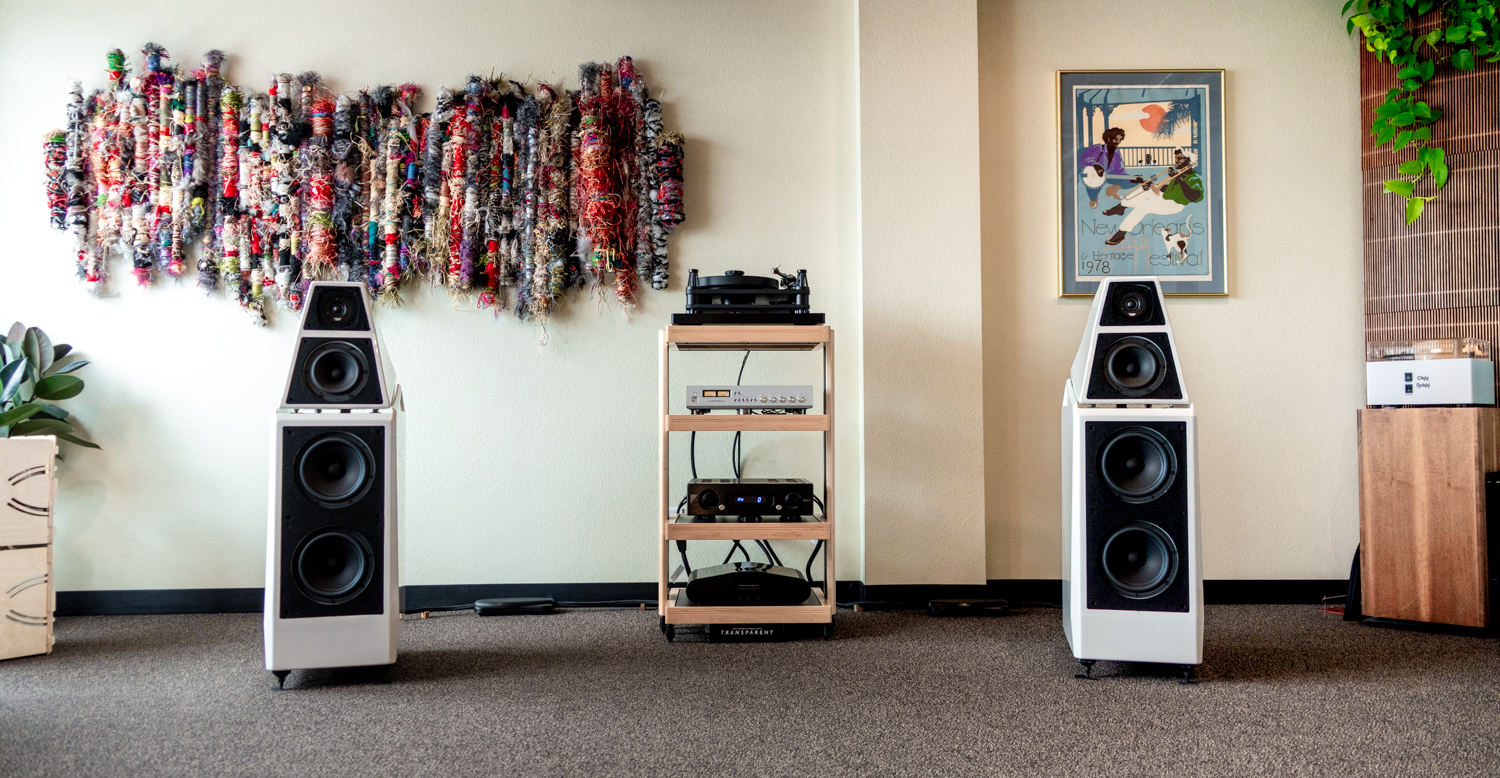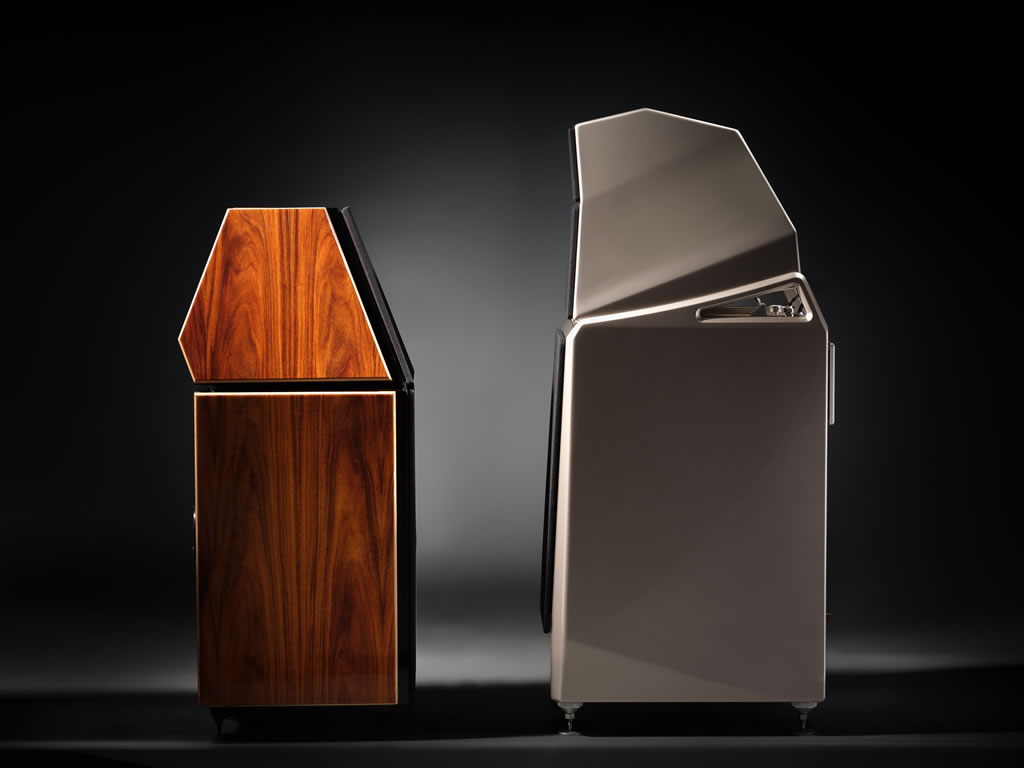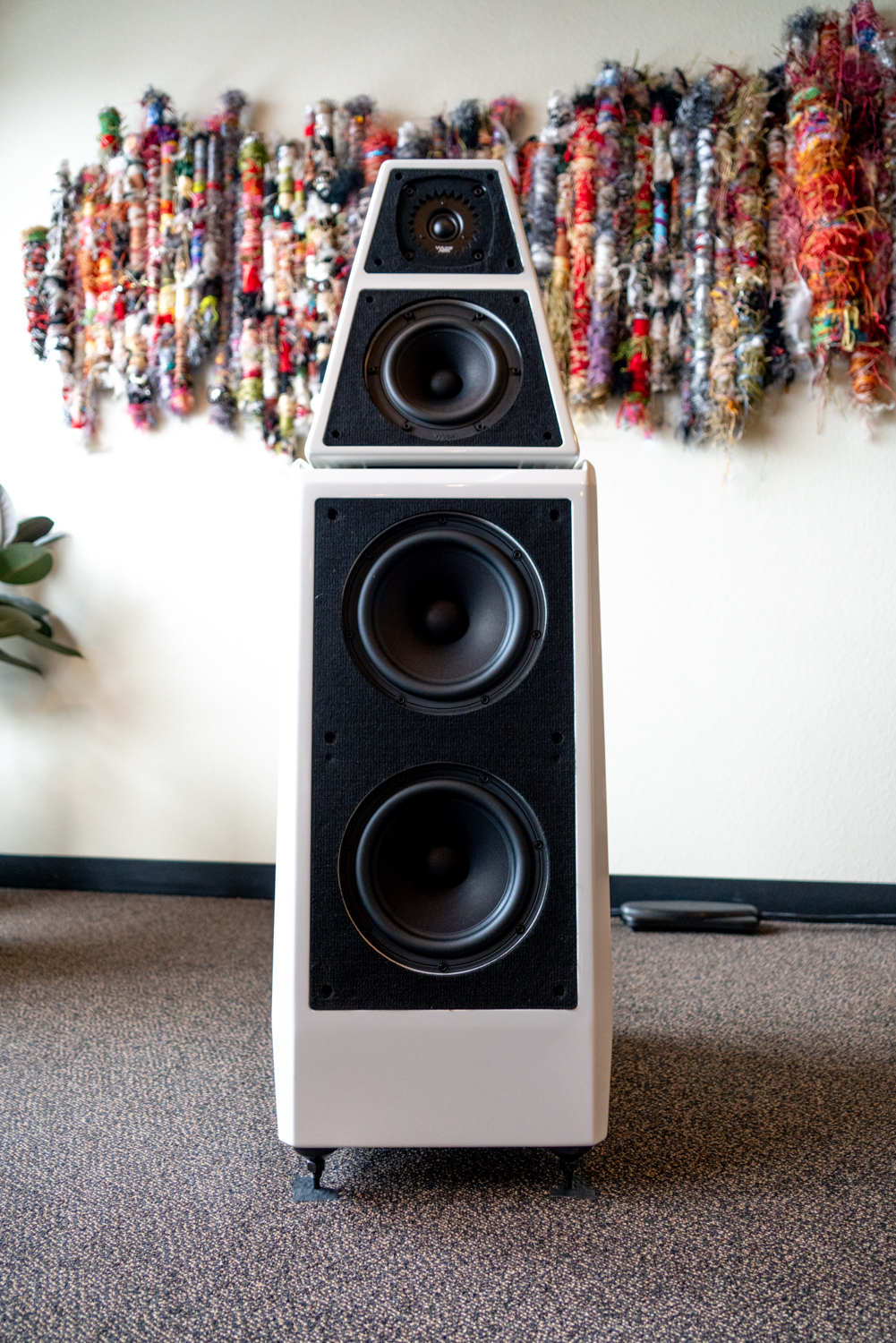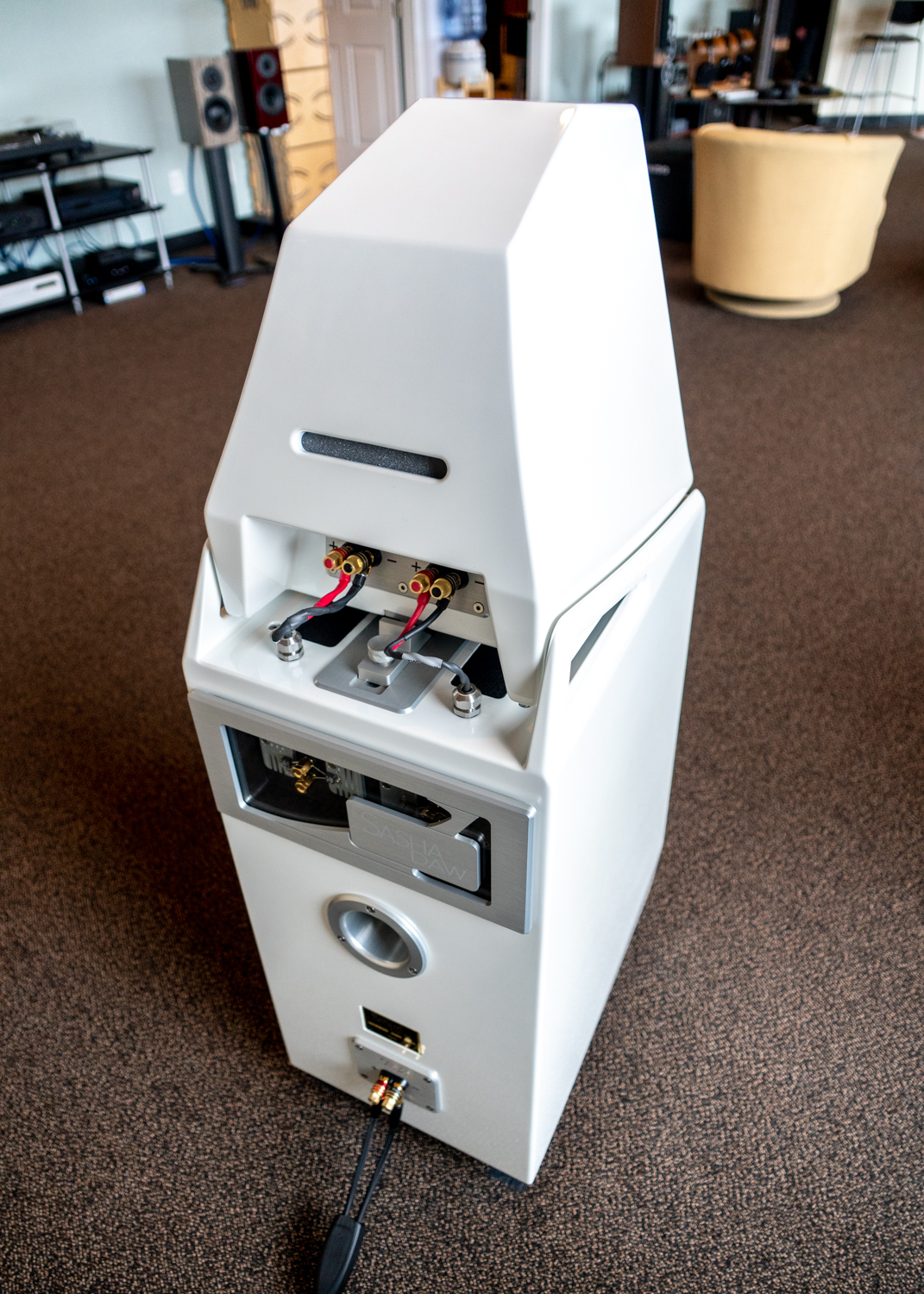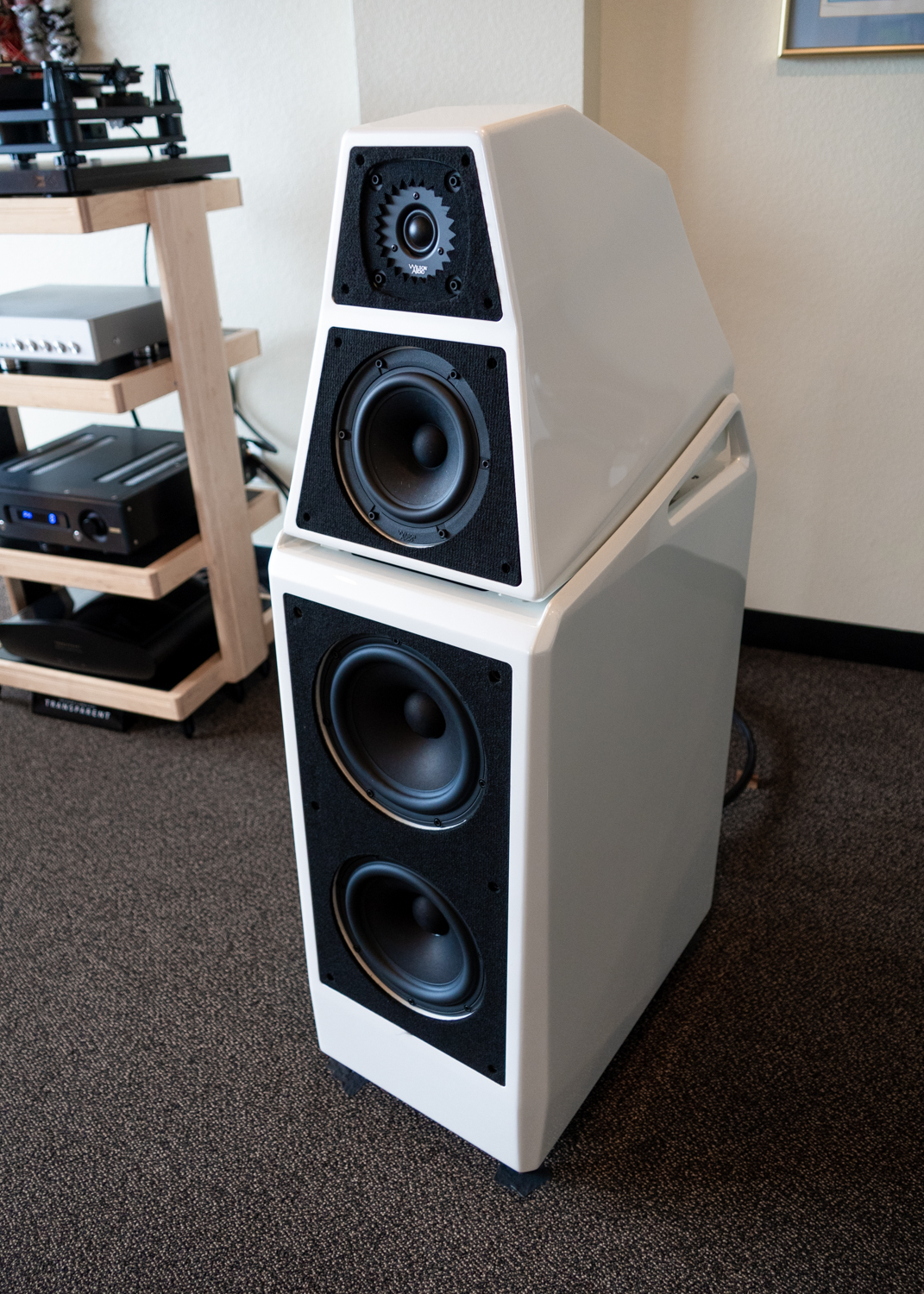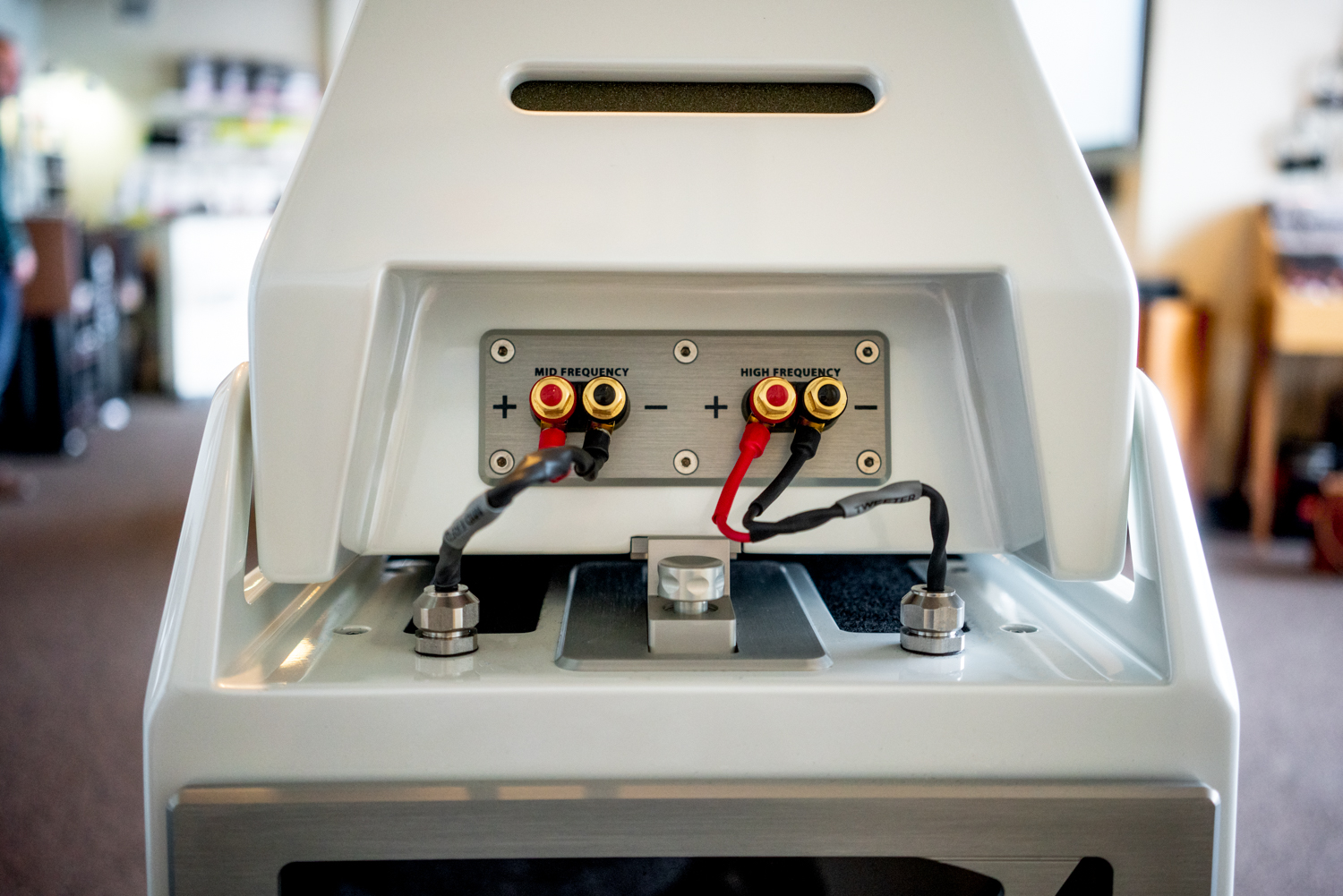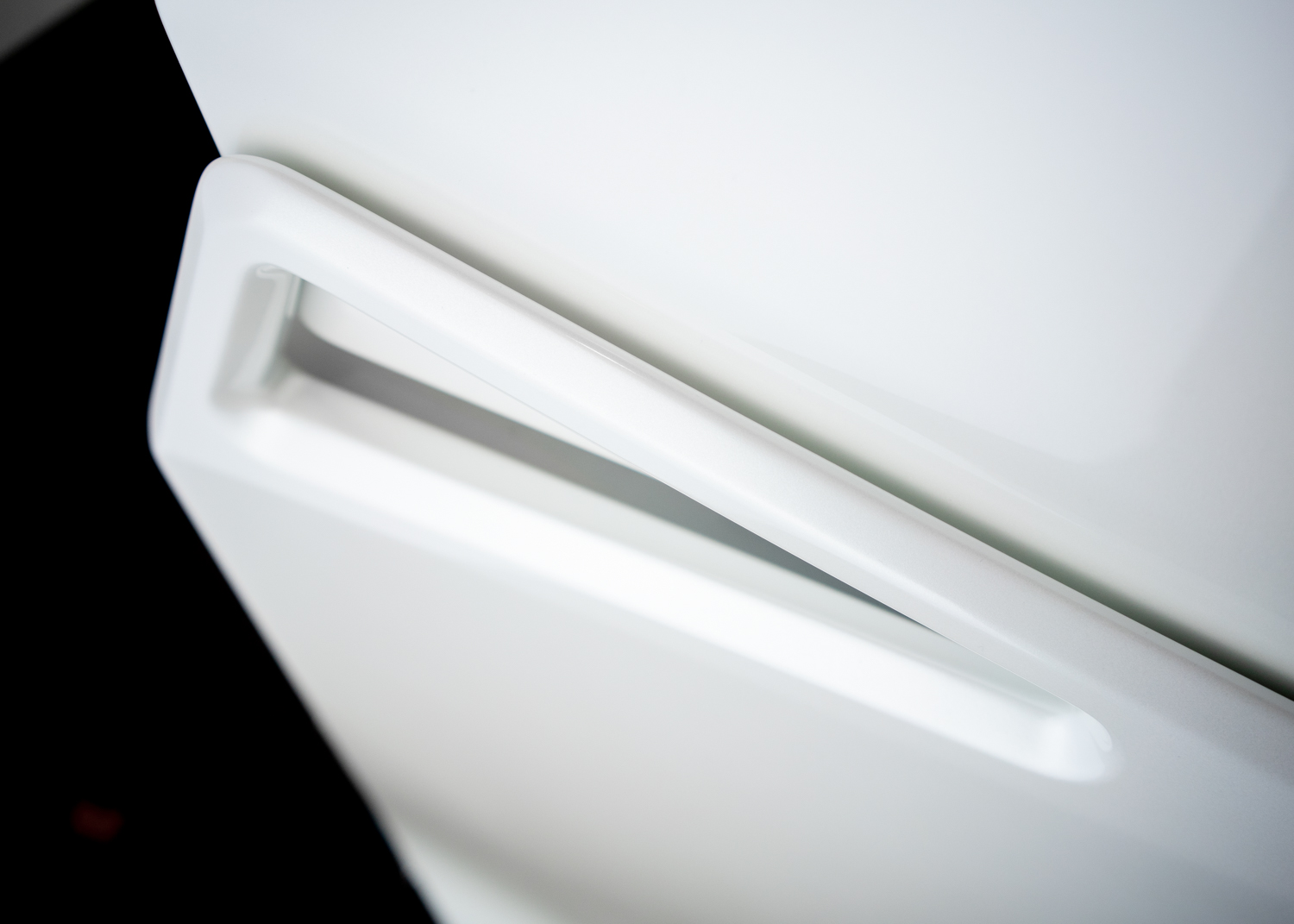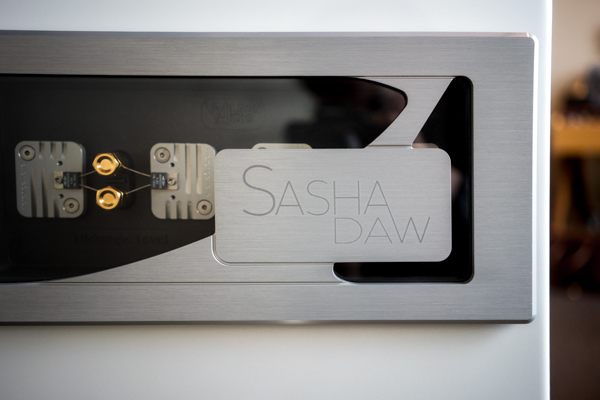In the years since the release of the Sasha Series 2, there have been some major developments within the Wilson Audio lineup; most significantly of which was the WAMM Master Chronosonic, Wilson's flagship creation. Flagships such as the WAMM serve a dual purpose in the audio world. Firstly, they are a phenomenal product in their own right upon completion. Beyond this, the development of a true flagship product acts as a testing bed for designers, freeing them to push the boundaries of what is thought possible. Often this process brings about new techniques or methods to make improvements and solve problems. With the latest technology and knowledge gained from the development of the WAMM, Daryl Wilson, son of David Wilson, decided it was time for an overhaul of the Sasha Series 2. For those unfamiliar with the history of Wilson Audio, the Sasha is the re-imagination of the first majorly successful Wilson Audio speaker, the WATT/Puppy, starting with the Sasha Series 1 in 2009, followed by the Series 2 and now the DAW.
The WATT/Puppy was originally the combination of a complete speaker; a mini monitor with its own crossover, and a woofer module with an independent crossover. The Sasha became a single speaker with a unified crossover shared between all of the drivers. This approach enabled much better integration between the individual components and has carried on with the DAW. A development from the WAMM which has made its way to the Sasha DAW is the upgraded umbilical connections. Looking at the back of the DAW, you can see the new air-tight connectors in use, allowing for both a better seal and less wasted internal volume and materials. The connections used in previous versions took up notably more internal air space, which means a bigger box is needed for the same internal volume.
With the complete overhaul of the Sasha series came a redesigned woofer module. While the overall shape of the cabinet remains fairly similar to previous generations, there are a number of updates beyond what can be seen. The new drivers utilized in the woofer module are based on the 8" drivers found in the Alexia series 2, yet customized for their use in the Sasha. In addition to this change, the internal volume has been increased by 13.3%, to better match these new drivers. With the additional volume, you gain both efficiency and extension. The gained authority in the bottom octave paired with lower distortion brings about a true effortlessness to the bass region. A feature that can't really be seen outwardly is the new design of the walls of the cabinet. The X-material of the cabinets has been thickened overall, helping reduce panel resonances, but in addition to being thicker, the material is of inconsistent thickness. Having all tapered panels helps spread any possible energy storage across a range of frequencies and energy states, further reducing any possibility of coloration through the speaker's response range. The new shaping was able to be applied in a beautiful fashion, with an elegant sculpted shape carved into the side of the cabinets, a similar design as featured on the WAMM.
Additional parts were taken from the flagship WAMM for the Sasha DAW; the tweeter and midrange drivers! In the upper module, the internal volume was again increased, partially to allow better control of internal reflections from the midrange, but also to increase efficiency and dynamic expression. Controlling the back wave of the midrange helps to improve on one of Wilson's major focuses, the silence between the notes. They achieve this by treating the inside walls of this chamber with machined facets which help reduce internal reflections, as well as specific shaping which greatly reduces the possibility of standing waves. As a result, the noise floor and distortion of the midrange are vanishingly low, allowing the original source signal to dance along an extremely quiet background. The tweeter in use on the DAW, as in the WAMM, is the Convergent Synergy Mark V. In their development process, they had access to any and every tweeter material available. They found that in carefully conducted measurement and empirical listening that the doped silk dome tweeter in use was the most musically authentic and satisfying tweeter tested. This tweeter in its use in the DAW expresses itself very well, never calling undue attention to itself while presenting all of the musical detail in the original source.
One small feature often overlooked in a loudspeaker is the binding post. Traditionally, Wilson speakers only allowed for spade connections. The reasoning behind this was that Wilson found through their listening tests that spade terminals, given their larger surface area and ability to clamp the mating faces together with some force, were the best sounding. With the Sasha DAW, they have developed a completely new binding post, allowing for even better contact area when using spades. The new posts are now much easier to use with your hands rather than a tool, which can be convenient during initial setup. The largest change with the new binding post is the addition of holes in which banana cables can be used! No longer might consumers be inconvenienced in upgrading to Wilsons because they require all new speaker cabling. With the ability to use both spade and banana connections, almost any cable on the market can safely be used.
Analyzing a speaker as a series of individual pieces and developments is a great exercise, but does little to describe how these elements come together. In seeking excellence in every individual part and piece, Wilson Audio gives themselves a phenomenal foundation of components which combine into these speakers. The Wilson Audio Sasha DAW, given everything that goes into it, performs to a level that is difficult to comprehend until it is heard. It has such an effortless sound character to it, never seeming to strain at any reasonable output. Their low-end is fantastic, providing lifelike dynamics in the bass region without compression. They remain spatially resolving into the bass region as well, which is difficult for many speakers given the propensity for rising distortion and energy storage in this important foundational range. The sound stage scale is amazingly realistic, and well defined in both width and depth, giving a sense of space that seems holographic at times; you often forget that there are speakers in the room when you close your eyes. The ability to express dynamics effortlessly, from resolving the finest of details in space and unleashing the crescendo without any strain is really what makes these speakers exceptional.
The only way to fully appreciate this incredible speaker system is in person. We invite you to schedule a demonstration of our in-store reference system featuring the Wilson Audio Sasha DAW at your convenience!


